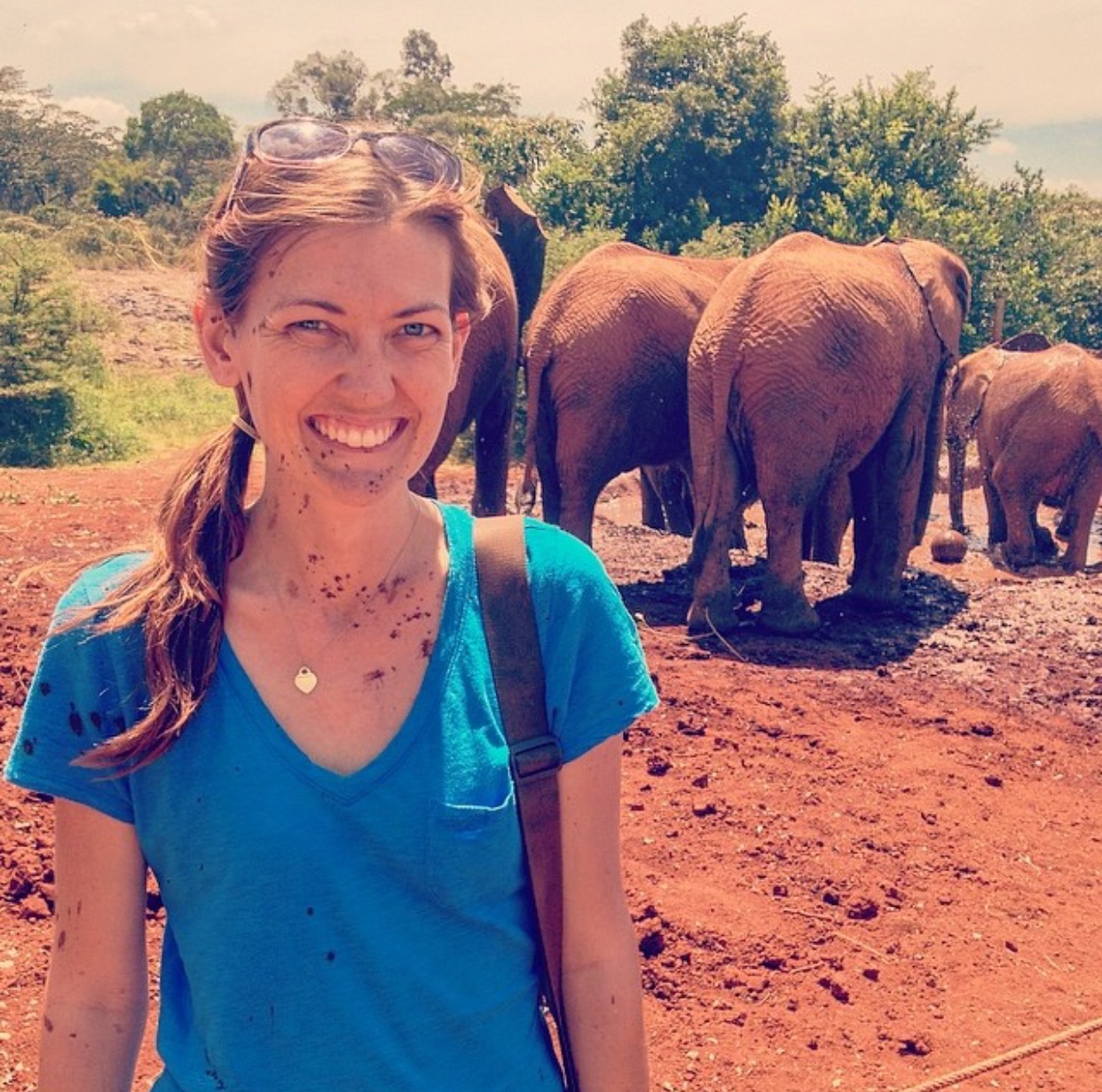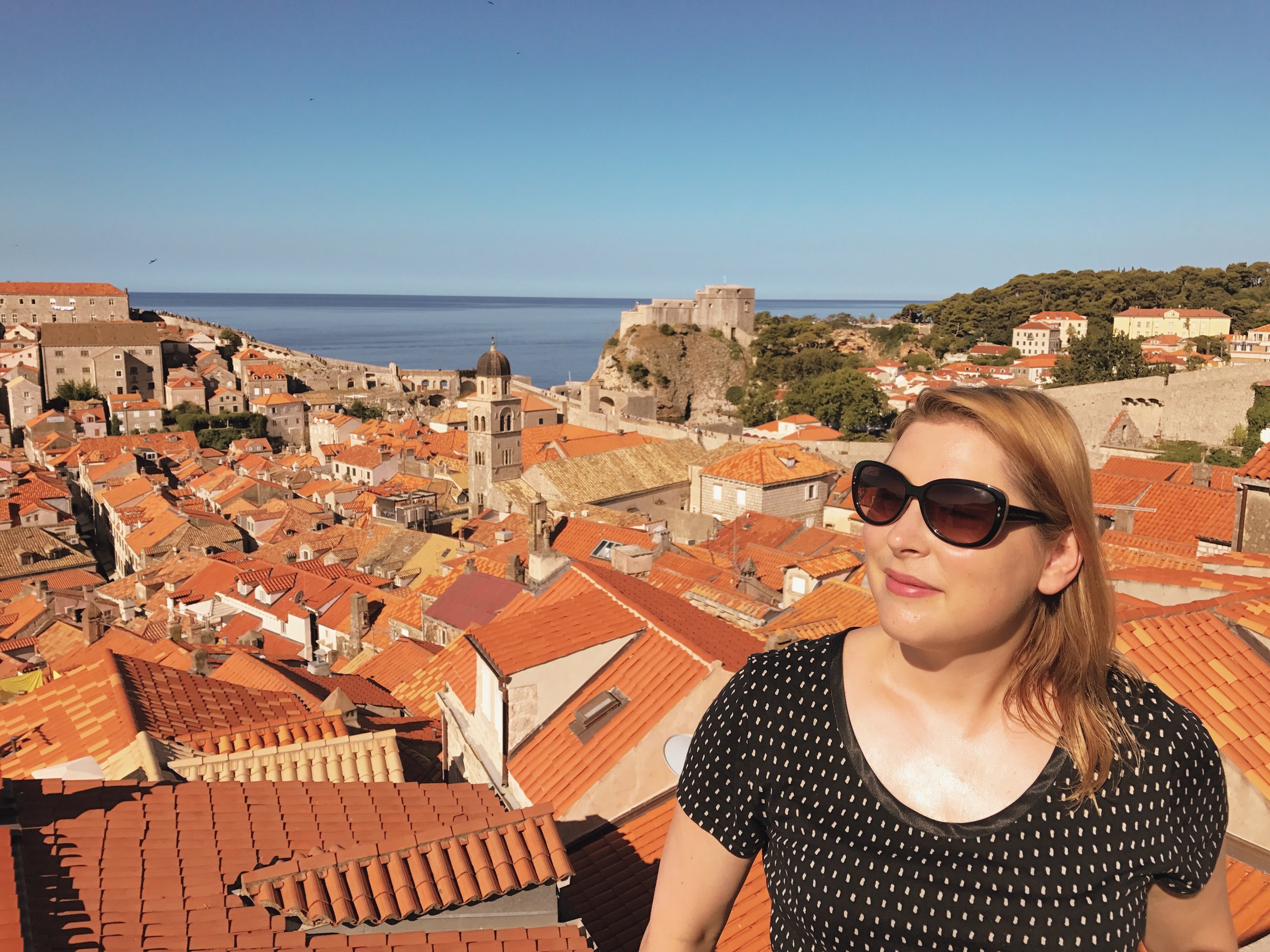Why You Probably Shouldn’t Volunteer Abroad and What You Should Do Instead
A participant in the microfinance organization Fundación En Vía. The nonprofit doesn't rely on donations. Rather, they run tours out into communities of indigenous women who use micro-loans to build their businesses. Visitors can tour their workshops to learn about their culture and skills, and the fee for the tour gets reinvested back into the loan pool that these women can pull from again. Photo by Shannon O'Donnell.
“There’s a reason that there are memes about volunteers taking selfies with little African children, and that’s because that’s what we’ve been sold as what it looks like to volunteer — and that’s not always the reality on the ground,” says Shannon O’Donnell, founder of Grassroots Volunteering and recent guest on the Postcard Academy. (Subscribe to the podcast to hear the whole story Apple Podcasts | Stitcher | Google Play).
There are two main issues with voluntourism: 1) organizations pocketing more money than they lead you to believe and 2) people doing feel-good projects that have no positive impact on the communities they are supposedly serving.
“And so you were getting schools that have been painted beautiful colors every year for the last 25 years, and the children in those schools didn’t have the right text books.”
Shannon experienced this firsthand during her first formal volunteer project abroad, teaching English at a monastery on a farm in Nepal’s Kathmandu Valley. “The experience was wonderful, but the middleman took the money and the monastery ended up feeding me every day and didn’t get any of the project fee. It was that exact experience that allowed me to realize that one of the things I could do with my platform is not just write about what it’s like to be a digital nomad but to share with people how these organizations are working.”
David Sheldrick Wildlife Orphan Trust. "They tell me getting sprayed from head to toe with mud by the orphaned baby elephants is a blessing," Shannon says. "I think they were just trying to make me feel better!" Photo by Shannon O'Donnell.
Over the years, Shannon’s website A Little Adrift has become one of the best resources for responsible tourism. In 2011, she launched its sister platform Grassroots Volunteering, and two years later National Geographic named her “Traveler of the Year” for her work connecting travelers with social enterprises and grassroots initiatives all over the world. Shannon also literally wrote The Volunteer Traveler’s Handbook.
Grassroots Volunteering connects travelers to causes and communities via two databases, one listing social enterprises around the world, and the other listing independent global volunteer opportunities vetted by the community. “What you’re guaranteed is that these organizations are independent. They are not charging high fees. The fees are usually going directly to the project…What you really want in any organization is transparency on what exactly they’re doing so that you can make sure it matches your ethics.”
Salaton Ole Ntutu, the Maasai warrior chief of Maji Moto in Kenya, developed a social enterprise that allows travelers to stay with and learn from the Maasai people and their culture in a socially responsible way. Money from the tours helps fund his work to end female genital mutilation. Photo by Shannon O'Donnell.
Should I volunteer abroad?
Most of us probably shouldn’t volunteer abroad, Shannon says. We don’t have the time for proper training, and we want the sexy ‘projects’ like riding around on elephants.
“That's why I push people away from volunteering,” Shannon says, “because the fact is, most people don't actually want to do what it takes. They want to be out in the field, and moving the needle doesn’t always look like you with a shovel in your hand planting trees. Sometimes it looks like you filing paperwork.”
If you do want to volunteer abroad, here are a few things to consider:
Ask yourself if you have the time to commit to the project you’ve decided to do. “That’s probably not days if it’s teaching.”
The fee you pay should match the type of volunteer experience. “The shorter your experience, the more you can expect to pay because they are not investing in you longterm…I saw a Costa Rica volunteer experience that was $7,000. I was like, ‘I could live in Costa Rica for a year on $7,000!’ Where is that money going?”
Educate yourself on the project and people you want to help, and understand what real help looks like. “Good development practices limit dependency on the project, and the project maintains the dignity of the local people. Is your project actually trying to build the capacity enough to make itself obsolete? If the answer is no, then you’re making a community project based on dependency or you’re not giving people skills that will allow them to not need foreign aid.”
"After watching her neighboring vendors flag me down to photograph their grandchildren, their vegetables, their decapitated fish, and themselves, this woman gave me a gentle wave to snag my attention just as I was about to walk away," Shannon says. "More than any other city I visited in Vietnam, the people in Tra Vinh were delighted to have a foreigner at the market wielding a big smile, friendly curiosity, and a discreet camera. Photo by Shannon O'Donnell.
A better way to invest in local communities
Shannon believes most of us can better serve the communities we visit by supporting social enterprises, which are self-sustaining businesses that fulfill a social need without relying on donations. This is the other half of her Grassroots Volunteering site: a list of reputable businesses that don’t require any volunteering, but that you invest in local products and services.
“Like getting a massage when you’re in Thailand from women who were former prisoners and who were trained because they can no longer integrate into society once they leave the prison system,” Shannon says. “We don’t have quite the stigma that Thai society does, so you can really change these women’s lives by just spending money at a business when you’re probably already going to get a wonderful Thai massage when you’re there. I tell people, you really can feel good about going to get a massage and feel as good as someone who went and volunteered because they’re both incredibly valuable.”
I think we can all feel good about that.
If you found this article useful, please share it, and subscribe to the Postcard Academy podcast. Each week, expats and adventurers share their insider travel tips on the best food, nightlife, and cultural experiences in the most interesting places around the globe. I’m your host, Sarah Mikutel, an American who's spent the last 7 years living in, and traveling around, Europe.





